2015 Ford Mustang EcoBoost Review

I’m giddy like a school girl when the Mustang shows up. This is my ride to southern New Jersey for the 24 Hours of Lemons race, and it’s a perfect tool for the job.
I think the new Mustang looks much better in person than pictures. This color combination is love at first sight. Upon closer inspection, it has the coveted Performance Package, and a peek inside reveals its optional Recaro seats and, most importantly, a proper six-speed manual transmission! Yes, the car Gods have smiled upon me.
Yet, the biggest surprise is when I start the engine…
…which sounds like the Ford Escape.
Yup – it’s the new four-cylinder Mustang EcoBoost. That deep V8 tone, pronounced by a sweet rumble at start-up that makes the hairs on the back of your neck stand up, is gone. Instead, I get the sound and fury of a CUV.
I keep an open mind because surely no one at Ford would put this four-banger into a Mustang if it’s anything but great. To be honest, to me, this is the most interesting engine of the three available, if for no other reason than I simply don’t not know what to expect.
Right away, this engine feels different than most sporty turbocharged fours. For one, it feels heavy. It does not rev very freely, as if there is a heavy flywheel attached. Interestingly, I said the exact same thing of the 1.0-liter three-cylinder in the Fiesta. Secondly, the torque curve is very flat and without much lag, both good. Ford says the engine’s peak 320 lb.-ft. is available between 2500 and 4500 rpm. There are 310 horsepower at 5500 rpm and it seems to drop off when approaching the redline.
Accompanying that power from 2500 rpm up is the sweet sound of turbo whistle – quite addictive. During street acceleration or highway passing, this engine whistles blissfully while pulling hard, and it almost makes up for the lack of the V8 sound. Almost. But I question the noise: is it organic or is Ford fooling me?
So it’s got torque, but is it fast? That’s depends on your definition of fast. Buff books say the EcoBoost ‘Stang will achieve 0-60 mph in 5.5 seconds and complete the quarter in 13.9 seconds. That was fast some years ago, but today that’s hardly quick; a V6 Accord is just two tenths slower through the traps. The EcoBoost Mustang requires persuasion to really move fast, whereas a V8 engine would seemingly have all the power, all the time.
Even when driven in anger, I wouldn’t go racing any V8 Mustangs and, trust me, every Mustang driver on the road will want to race you. Just look away. If you’re into modifying, you’ll be happy to know there are EcoBoost Mustangs running around with 400 horsepower at the rear wheels.
Despite being the smallest of the three American muscle cars, the Mustang isn’t a small sports car, being six inches longer and two and a half inches wider than the BMW 428i coupe. It weighs 3,532 pounds, which is about 100 pounds more than the Bimmer and 170 less than an equivalent Mustang GT.
While it feels heavy, Ford has somehow managed to make this weight work, and it’s damn fun to drive on any road. Despite being at a race track, I did not have permission to do any laps in the ‘Stang, but I am certain it would do quite well with the Pirelli P-Zeros as part of the Performance Package.
What I’m disappointed with is the fact Ford went through all this effort to make the F-150 body out of aluminum but only the hood and fenders on the ‘Stang. Less weight, which one would expect in the change to a four-cylinder engine, would drive the fun factor way up. It would improve the fuel economy, too, which the EPA rates at 22 mpg in the city, 31 mpg on the highway and 26 mpg combined. On my somewhat casual New Jersey Turnpike drive I got about 27 mpg. With the overall trip average, which included the fun Merritt Parkway and crowded Bergen County, I averaged 23 mpg. For comparison, the manual V6 gets 17 mpg city and 28 highway, while the V8 manual is rated for 15 mpg city and 25 highway. Not that fuel economy is a selling point of the Mustang.
The rest of the car, to be brief, is great. The Recaro seats, despite lacking side bolster adjustments or bottom cushion extension, are very comfortable for the six-foot-two me and drew cheers from the dozen guys who asked me if they could check out the car. While supportive, the seats are not difficult to get in and out of and not at all tiring over my six hour drive. Unlike the conventional seats, the Recaros are not heated or ventilated, and they don’t return to their original position after accessing the rear seat. If I had one wish, it would be for slightly more headroom for the times one is wearing a helmet. The rear seats are best suited for shorter folks.
The shifter is damn near perfect for enthusiastic driving – not too short, with only the sixth gear not always where expected; little to the right. It was as if the car wanted to shift naturally from fifth to fourth, but going into sixth requires more decisiveness, which makes sense. The clutch pedal feels a bit stiff, reminding you this is no econobox, but it is not difficult when stuck in gridlocked traffic on the George Washington Bridge approach.
Once seated, forward visibility is very good and much improved over the previous generation, but the side mirrors are a bit small. The dash is nicely laid out, with all controls within easy access. Some things, such as the toggle switches chrome-like trim or the “ground speed” speedometer, may not be to everyone’s taste, but everything worked very well. It has taken me many years, but I have finally warmed up to the love-it-or-hate-it, soon to be replaced MyFord Touch system, which in this car was complimented by the Shaker audio system. The HID headlights are excellent, too.
What irks me are the selectable drive and steering modes. There are four driving modes (normal, snow-wet, sport, and track) and three steering modes (comfort, normal and sport). With each restart they default to normal. I understand all automakers do this now for various reasons, but I shouldn’t need to tell my Mustang to be sporty each time I get into it. It should have two modes: Go! and LMHBSMA!, let-me-hoon-but-save-my-ass track mode.
The 2015 Mustang EcoBoost starts at $25,300. This Premium model punches it up to $29,300. The Shaker audio system is $1,795, adaptive cruise control is $1,195, Performance Package (19” wheels with Pirellis, 3.55 LSD, thicker rear sway bar, bracing, larger rotors and 4-piston front calipers, larger radiator, gauge pack) is well worth $1,995, $1,595 for Recaro seats, few other minor options and destination charge bring the price of the reviewed vehicle to $38,585. For comparison, an equally equipped GT model would cost over $5,000 more.
Minor annoyances aside, I really like this ‘Stang. I love how it looks (especially in this color combination, which seemed especially tricky to photograph). I like all the features, the fun-to-drive factor, comfort, refinement, and its surprisingly large trunk – but it does leave me somewhat puzzled. It’s not significantly lighter, cheaper, or economical than a Mustang with the proper V8 engine. It’s also not much faster than the V6. It exists so Ford can sell the Mustang around the world, but anyone who buys one anywhere will be reminded they should have gotten the V8 every time they start the engine.
Kamil Kaluski is the East Coast Editor for Hooniverse.com. His ramblings on Eastern European cars, $500 racers, and other miscellaneous automotive stuff can be found there. He and his team were doing really great in the race right until they blew the engine.
Ford Motor Company provided the vehicle for the purpose of this review.

More by Kamil Kaluski
Latest Car Reviews
Read moreLatest Product Reviews
Read moreRecent Comments
- Mebgardner I owned 4 different Z cars beginning with a 1970 model. I could already row'em before buying the first one. They were light, fast, well powered, RWD, good suspenders, and I loved working on them myself when needed. Affordable and great styling, too. On the flip side, parts were expensive and mostly only available in a dealers parts dept. I could live with those same attributes today, but those days are gone long gone. Safety Regulations and Import Regulations, while good things, will not allow for these car attributes at the price point I bought them at.I think I will go shop a GT-R.
- Lou_BC Honda plans on investing 15 billion CAD. It appears that the Ontario government and Federal government will provide tax breaks and infrastructure upgrades to the tune of 5 billion CAD. This will cover all manufacturing including a battery plant. Honda feels they'll save 20% on production costs having it all localized and in house.As @ Analoggrotto pointed out, another brilliant TTAC press release.
- 28-Cars-Later "Its cautious approach, which, along with Toyota’s, was criticized for being too slow, is now proving prescient"A little off topic, but where are these critics today and why aren't they being shamed? Why are their lunkheaded comments being memory holed? 'Who controls the past controls the future. Who controls the present controls the past.' -Orwell, 1984
- Tane94 A CVT is not the kiss of death but Nissan erred in putting CVTs in vehicles that should have had conventional automatics. Glad to see the Murano is FINALLY being redesigned. Nostalgia is great but please drop the Z car -- its ultra-low sales volume does not merit continued production. Redirect the $$$ into small and midsize CUVs/SUVs.
- Analoggrotto Another brilliant press release.



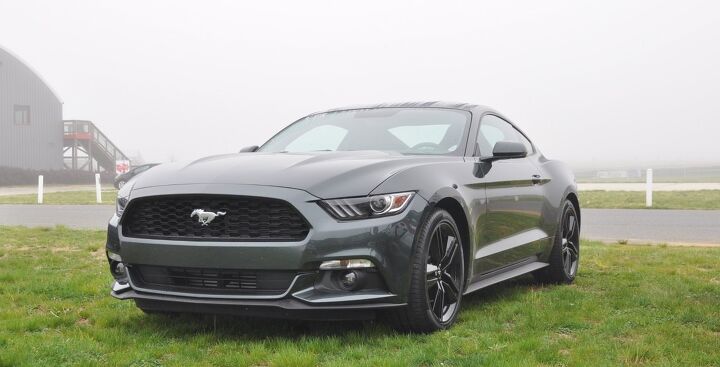






















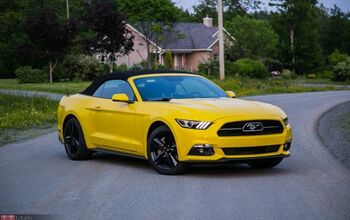
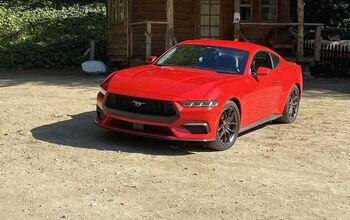
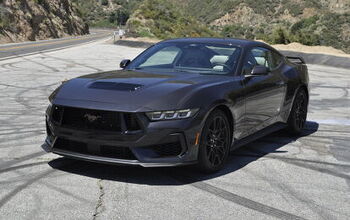

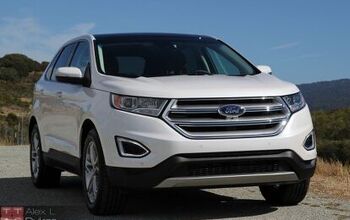










Comments
Join the conversation
Where is the TTAC review of the 2015 Mustang GT? Can't seem to find it.
I don't regret purchasing an Ecoboost over the GT. First of all, insurance. A GT gets the much higher insurance premium. I traded in a 2012 V6 for a 2016 Ecoboost. The V6 was plenty fast enough for all real world situations. The Ecoboost is faster, and has MUCH more low end torque. I commute in my car, and can only afford one car, so the compromise between cost to own and insure vs usable performance puts the GT at a disadvantage. Moreover, I had the option to purchase a 2013 GT Convertible premium for about the same price, and honestly, the Ecoboost with the Performace package was much more fun to drive. The thing has a shocking amount of low end power and you absolutely have to baby it off the line. The new chassis is so much better than the older Mustangs, I've owned 3 now and in terms of handling, there is no comparison. The S550 'Stangs hold the road far more competently than the 5th Gen cars. Driving the Ecoboost with performance pack feels almost like driving a big block muscle car. No, it doesn't sound like one when you start it up, and Ford has cheesed up the experience with piped in cabin faux engine noise (it does sound good, but still ... admittedly, it's cheesey), but if you sat someone in one and didn't tell them what it was, they would probably think it was a V8. The car pulls much harder off the line than any GT made before 2010 that I've ever driven. I don't regret my purchase over a GT. I like the amenities that you get with the Premium edition and the Ecoboost Performance pack is a fairly serious performance car, that you can insure and keep gas it for everyday driving.